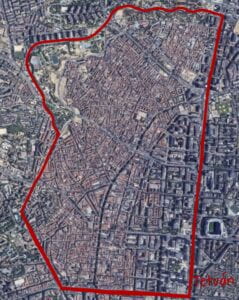In cities, landmarks are extremely significant. It must be a feature, site, or thing unique to a certain neighborhood or city. The Eiffel Tower, for example, is a major landmark in Paris, France. The Lavapiés and Tetuán neighborhoods of Madrid, Spain, are regarded to be among the poorest in the city. Both Lavapiés and Tetuán have their own set of sights, ranging from their primary marketplaces to their historic locations. I’ve been investigating these areas for the past two weeks, trying to figure out why they’re considered “vulnerable.” Having the opportunity to travel and observe firsthand how each neighborhood operates and the many relationships amongst its residents gave me a sense of belonging.
Understanding what each neighborhood entails was critical for my study. By looking at the land’s border, you can spot objects that aren’t visible to the naked eye. By simply looking at the map, the Tetuán neighborhood was readily apparent. The area stood out on the map because the cluster of brown houses appeared to be stacked on top of each other. The neighboring areas had a more orderly sense of planning, demonstrating the distinction between Tetuán and a middle-class community. In-person, this area appeared to have been heavily gentrified. There were antique structures stacked on top of one other and new buildings that created an odd contrast.

Neighborhood of Tetuán
On the other hand, Lavapiés is an old neighborhood that has managed to retain its original qualities. The map appears like it was well-planned, and the area is located near one of Madrid’s most famous parks and museums. This area appeared to be well-kept, and the streets were lined with tourist stores.

Neighborhood of Lavapiés
